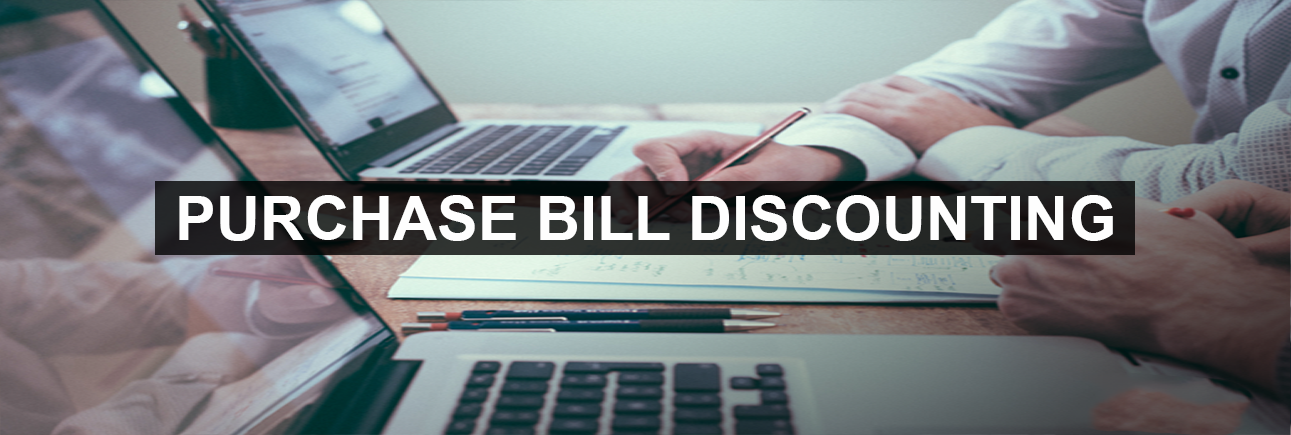

Introduction to Purchase Bill Discounting:
In the fast-paced world of business, cash flow management plays a crucial role in ensuring smooth operations. One of the effective financial tools to enhance liquidity is Purchase Bill Discounting. This blog, authored by CA Vikas Jain, delves into the essentials of Purchase Bill Discounting, offering insights and practical guidance. Through a series of frequently asked questions (FAQ), we'll explore the concept, benefits, and nuances of Purchase Bill Discounting, providing valuable information for businesses and finance professionals alike.
In the dynamic world of business finance, maintaining a steady cash flow is crucial for the smooth operation and growth of any enterprise. For businesses dealing in goods and services, the delay between the delivery of goods and receiving payment from customers can create significant cash flow challenges. This is where Purchase Bill Discounting comes into play. It's a financial tool that allows businesses to bridge the gap between their sales and the receipt of payment, enabling them to maintain liquidity and continue operations without interruption.
This blog aims to provide a detailed understanding of Purchase Bill Discounting, its process, benefits, and how it can be an effective solution for businesses.
Purchase Bill Discounting is a short-term financing solution where a business sells its unpaid invoices (or bills) to a financial institution at a discounted rate in exchange for immediate cash. This allows the business to receive funds immediately rather than waiting for the payment terms, which could range from 30 to 120 days or more. The financial institution or lender providing the discounting service takes over the responsibility of collecting payment from the customer on the due date.
The process of Purchase Bill Discounting involves the following steps:
Issuance of Invoice: Once the business delivers goods or services to its customer, it issues an invoice with a specific payment due date.
Application for Discounting: The business approaches a financial institution, such as a bank or NBFC (Non-Banking Financial Company), to discount the invoice.
Assessment and Approval: The financial institution assesses the creditworthiness of the business and its customer. Once approved, the financial institution agrees to purchase the invoice at a discounted value.
Disbursement of Funds: The financial institution disburses the funds to the business after deducting the discounting fee. The amount disbursed is usually a percentage of the invoice value.
Collection of Payment: On the invoice's due date, the financial institution collects the payment directly from the customer. Once the payment is received, any remaining amount (if applicable) is disbursed to the business.
Improved Cash Flow: The primary benefit of Purchase Bill Discounting is the immediate improvement in cash flow. Businesses can access funds tied up in unpaid invoices and use them to meet operational expenses, pay suppliers, or invest in growth opportunities.
No Collateral Required: Unlike traditional loans, Purchase Bill Discounting typically does not require collateral. The invoice itself acts as security, making it an attractive option for businesses without significant assets to pledge.
Flexibility: Businesses can choose which invoices to discount, allowing them to manage their cash flow more effectively. This flexibility makes it a tailored solution for specific financial needs.
Credit Risk Mitigation: The risk of non-payment by the customer is transferred to the financial institution, reducing the business's exposure to bad debts.
Cost-Effective: Since Purchase Bill Discounting is a short-term financing option, the cost is generally lower than long-term loans. Additionally, businesses only pay for the funds they need, making it a cost-efficient solution.
There are several types of Purchase Bill Discounting available, depending on the needs of the business and the terms offered by the financial institution:
Recourse Discounting: In this type, the business remains liable if the customer fails to pay the invoice. The financial institution can recover the amount from the business.
Non-Recourse Discounting: Here, the financial institution bears the risk of non-payment by the customer. If the customer defaults, the financial institution cannot claim the amount from the business.
Partial Discounting: The financial institution discounts only a portion of the invoice value, disbursing a percentage of the total amount to the business.
Full Discounting: The entire invoice value is discounted, and the business receives a substantial portion of the amount upfront.
While Purchase Bill Discounting offers numerous benefits, businesses should consider the following factors before opting for this financing option:
Cost of Discounting: The discounting fee can vary based on the financial institution, the creditworthiness of the business and its customer, and the invoice amount. Businesses should compare offers from multiple lenders to secure the best deal.
Customer Relationships: The involvement of a third-party financial institution in collecting payments from customers can impact relationships. Businesses should ensure that the process is managed professionally to maintain positive customer relations.
Creditworthiness: The financial institution will assess the creditworthiness of both the business and its customer before approving the discounting. Businesses with a strong credit history and reliable customers are more likely to secure favorable terms.
Legal and Documentation Requirements: Businesses must ensure that all legal and documentation requirements are met to avoid any issues during the discounting process. This includes proper invoicing, customer agreements, and compliance with relevant laws.
Purchase Bill Discounting is an effective financial tool that can significantly improve a business's cash flow and provide the liquidity needed to sustain operations and foster growth. By understanding the process, benefits, and considerations involved, businesses can make informed decisions and leverage this solution to enhance their financial stability.
For businesses facing cash flow challenges due to delayed payments, Purchase Bill Discounting offers a practical and flexible solution to ensure uninterrupted operations and continued success.